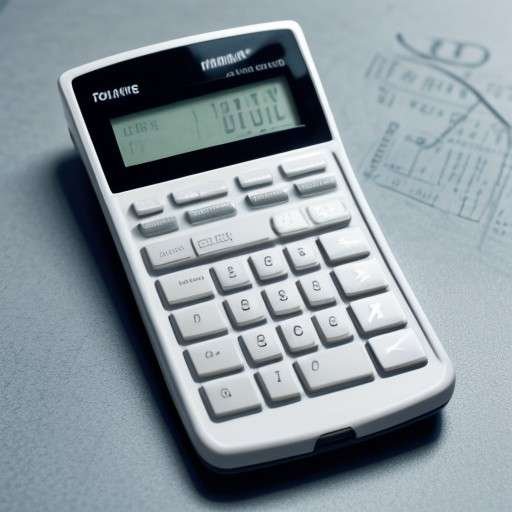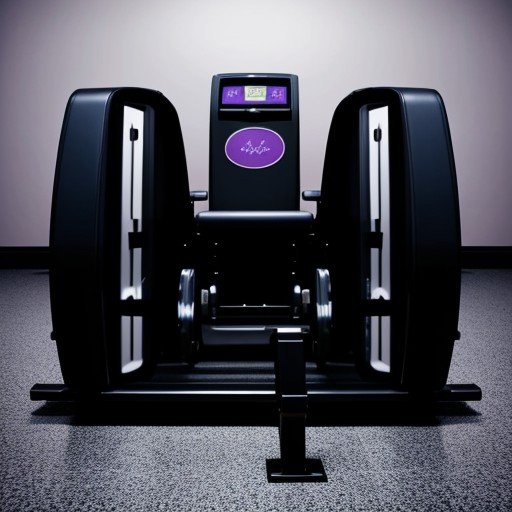1Rm Bench Press Calculator: Maximize Your Strength!
A 1RM bench press calculator estimates the maximum weight you can lift once. Use it to measure your upper body strength.

Seeking to enhance your weightlifting routine? Understanding your one-rep max (1RM) on the bench press is crucial. It’s a benchmark of upper body strength and a key indicator of your overall weightlifting progress. Knowing this figure can help tailor your workout to your specific strength level, allowing for targeted improvements.
It also serves as a motivational tool, pushing you to surpass your personal bests. Whether you’re a gym newbie or a seasoned lifter, a 1RM bench press calculator simplifies the process of setting and achieving your fitness goals. It ensures your training stays challenging yet within safe limits, promoting steady strength gains without risking injury.
Introduction To 1rm Bench Press
The 1RM (One-Repetition Maximum) Bench Press is a key measure in weightlifting. It shows the heaviest weight you can lift with one complete movement. This number helps tailor your workout plan.
The Importance Of 1rm Bench Press In Strength Training
Understanding your 1RM is crucial for effective strength training. It lets you:
- Set clear strength goals
- Track your progress accurately
- Adjust the intensity of your workouts
This number acts as a guide to push your limits in a safe way.

What Is 1rm And How It’s Calculated
Understanding the 1RM is crucial for anyone serious about strength training. Known as the One Repetition Maximum, it’s the heaviest weight you can lift for a single repetition of a given exercise. It serves as a benchmark to measure your strength and design your workout programs.
The Science Behind 1rm
The concept of 1RM lies at the heart of strength training. It reflects the maximum force your muscles can generate in one all-out effort. Knowing your 1RM helps tailor your training intensity, ensuring you lift safely and effectively.
Calculating Your 1rm: Common Formulas
Various formulas exist to estimate your 1RM without the risks of lifting max weights. Here are the most popular:
- Epley Formula:
(Weight Reps 0.033) + Weight = 1RM - Brzycki Formula:
Weight (36 / (37 - Reps)) = 1RM - Lombardi Formula:
Weight Reps^0.10 = 1RM
These formulas can help you plan your training sessions with precision. However, remember that they provide estimates. Your actual 1RM may vary.
To calculate your 1RM:
- Select an exercise.
- Warm up properly.
- Choose a weight you can lift for multiple reps.
- Use the chosen formula to estimate your 1RM.
| Formula | Calculation |
|---|---|
| Epley | (Weight Reps 0.033) + Weight |
| Brzycki | Weight (36 / (37 - Reps)) |
| Lombardi | Weight Reps^0.10 |
Remember to consult with a fitness professional when using your 1RM in a strength program.

Benefits Of Knowing Your 1rm
Understanding your One-Rep Max (1RM) in the bench press is a game-changer. It’s the maximum weight you can lift for one full repetition. Knowing your 1RM helps tailor your workouts, measure strength, and set clear goals. Let’s explore the benefits further.
Personalized Training Programs
Your 1RM sets the stage for a workout plan just for you. It’s a tool that creates effective and safe training sessions. By knowing your limits, you can design a program that challenges you without risk of injury.
- Adjust weights based on your 1RM for different exercises
- Plan progressive overload to increase strength over time
- Choose reps and sets that match your fitness goals
Tracking Strength Progress
With your 1RM known, tracking gains becomes simple. Visualize improvements with clear data. It’s rewarding to see your 1RM numbers climb. Use these insights to stay motivated and push further in your fitness journey.
| Week | 1RM (lbs) | Progress |
|---|---|---|
| 1 | 200 | Baseline |
| 4 | 210 | +5% |
| 8 | 225 | +12.5% |
Witness strength gains and celebrate each milestone. Use your 1RM as a benchmark to gauge the effectiveness of your routine.
How To Prepare For A 1rm Bench Press Test
Testing your 1RM (one-rep max) on the bench press is a great way to gauge your upper body strength. Before taking on the challenge, it’s crucial to prepare correctly. Your performance and safety depend on a proper warm-up and safety measures. Let’s dive into the best practices for preparing for a 1RM bench press test.
Proper Warm-up Techniques
Warming up primes your muscles for the heavy lifting ahead. It increases blood flow and reduces injury risk. Follow these steps for an effective warm-up:
- Start light: Begin with no weight or light weight on the bar. Focus on form and full range of motion.
- Gradually increase weight: Slowly add weight in small increments, allowing your muscles to adapt.
- Include dynamic stretches: Perform arm circles and chest openers to enhance flexibility and mobility.
- Limit rest periods: Keep rest short between warm-up sets to maintain muscle temperature.
- Replicate motion: Mimic the bench press movement to engage the specific muscles used during the test.
Safety Considerations
Safety can’t be overlooked when testing your 1RM. Keep these points in mind to stay safe:
- Use a spotter: Always have someone nearby to assist you, especially during maximum lifts.
- Set up correctly: Ensure the bench and bar are stable and secure before starting.
- Know your limits: Listen to your body and don’t push beyond what feels safe.
- Use proper form: Keep your back flat on the bench and feet planted on the floor. This reduces the risk of injury.
- Rack weights safely: After lifting, carefully return the bar to the rack. Avoid sudden drops.

Techniques To Improve Your Bench Press
Mastering the bench press not only boosts your upper body strength but also helps you achieve personal fitness goals. Using a 1RM Bench Press Calculator can pinpoint your one-rep max. But how do you push past plateaus and improve? Techniques matter. Let’s unlock the secrets to upgrade your bench press.
Grip And Form Adjustments
Perfecting your grip and form is the cornerstone of a mighty bench press. Small tweaks can lead to big gains. A firm grip and correct elbow alignment empower your push. Keep your feet flat and drive through your heels. Ensure your back is slightly arched, engaging your core. This solid base amps up your pressing power.
- Widen or narrow your grip to target different muscle groups.
- Align wrists above elbows to maximize force transfer.
- Retract your shoulder blades for a stable and safe lift.
Assistance Exercises
Complement your bench press routine with assistance exercises. These moves strengthen the supporting cast of muscles. Think of them as your personal bench press boosters.
| Exercise | Muscle Group | Benefit |
|---|---|---|
| Push-Ups | Chest, Shoulders, Triceps | Builds foundational strength |
| Dumbbell Flyes | Chest | Enhances chest width and stretch |
| Tricep Dips | Triceps | Increases lockout power |
Include shoulder stability exercises like the overhead press. Strong shoulders are crucial for a solid bench. Don’t forget your back. Rows and pull-ups balance your upper body, preventing injury.
Incorporating 1rm Into Your Workout Routine
Knowing your one-rep max (1RM) can transform your training. It sets a benchmark for strength. It guides weight selection for building power, endurance, and muscle size. Use a 1RM Bench Press Calculator to start. Let’s dive into making 1RM work for you.
Periodization And Programming
Periodization is key for gains. It breaks training into phases. Each phase focuses on different goals. Think of it as a road map for your muscles. It leads to peak performance over time. Use 1RM data to tailor your periodization plan. Here’s how:
- Base phase: Build endurance with lighter weights.
- Build phase: Increase weight to grow muscle size.
- Peak phase: Aim for max strength with heavy lifts.
- Recovery: Rest muscles to prevent injury.
Avoiding Overtraining
Too much training can hurt progress. It leads to fatigue and injury. Your 1RM helps prevent this. It sets clear limits. Stick to calculated weights. Here’s what you can do to stay safe:
- Rest: Give muscles time to heal between sessions.
- Vary routines: Change exercises to target different muscles.
- Listen to your body: Take a break if you feel pain or discomfort.
- Track progress: Use your 1RM to measure gains without overdoing it.

Advanced Tools And Apps For 1rm Calculation
Discover the power of technology in your strength training journey with advanced tools and apps for 1RM (one-rep max) calculation. Gone are the days of rough estimates and guesswork. Embrace accuracy and progression with innovative solutions designed to optimize your bench press training.
Mobile Apps For Strength Tracking
Mobile apps take the lead in offering a blend of convenience and precision. With a few taps, these apps not only calculate your 1RM but also track your strength progress over time.
- Easy input of your current lifts.
- Automatic calculations save time.
- Historical data analysis helps spot trends.
- Personalized workout adjustments based on performance.
Online Calculators Vs. Manual Calculation
Online calculators offer precision beyond traditional methods. Manual calculations can be prone to errors and are time-consuming.
| Online Calculators | Manual Calculation |
|---|---|
| Quick and user-friendly | Slower, requires math skills |
| Stores past results digitally | Needs physical record-keeping |
| Updates with latest formulas | Depends on user knowledge |
| Accessible from any device | Limited to where calculations are done |
Choose the right tool for your goals. Whether it’s a mobile app or an online calculator, ensure your 1RM is calculated with precision for the best results in your bench press journey.

Frequently Asked Questions
How Rare Is A 225 Bench Press?
Achieving a 225-pound bench press is moderately rare, considered a milestone for intermediate weightlifters and a feat for the average gym-goer.
How Rare Is A 315 Bench?
Bench pressing 315 pounds is quite rare, achievable by only a dedicated few who commit to intense strength training programs.
Is 225 A Good Bench?
A 225-pound bench press is considered a good lift, especially for recreational lifters. It indicates solid upper body strength. For competitive athletes, higher benchmarks may be set.
How To Calculate 1rm Bench Press?
To calculate your 1RM bench press, start by selecting a weight you can lift 4-6 times. Perform the set, then use an online 1RM calculator to input your results. This tool will estimate your one-rep max based on your performance.
Mastering the 1RM bench press is a journey of strength and determination. Our calculator streamlines your path to personal records. Embrace the challenge, apply the numbers, and push your limits. Unlock the power within, and let’s lift those goals sky-high, together.
Stay strong, lift smarter!








